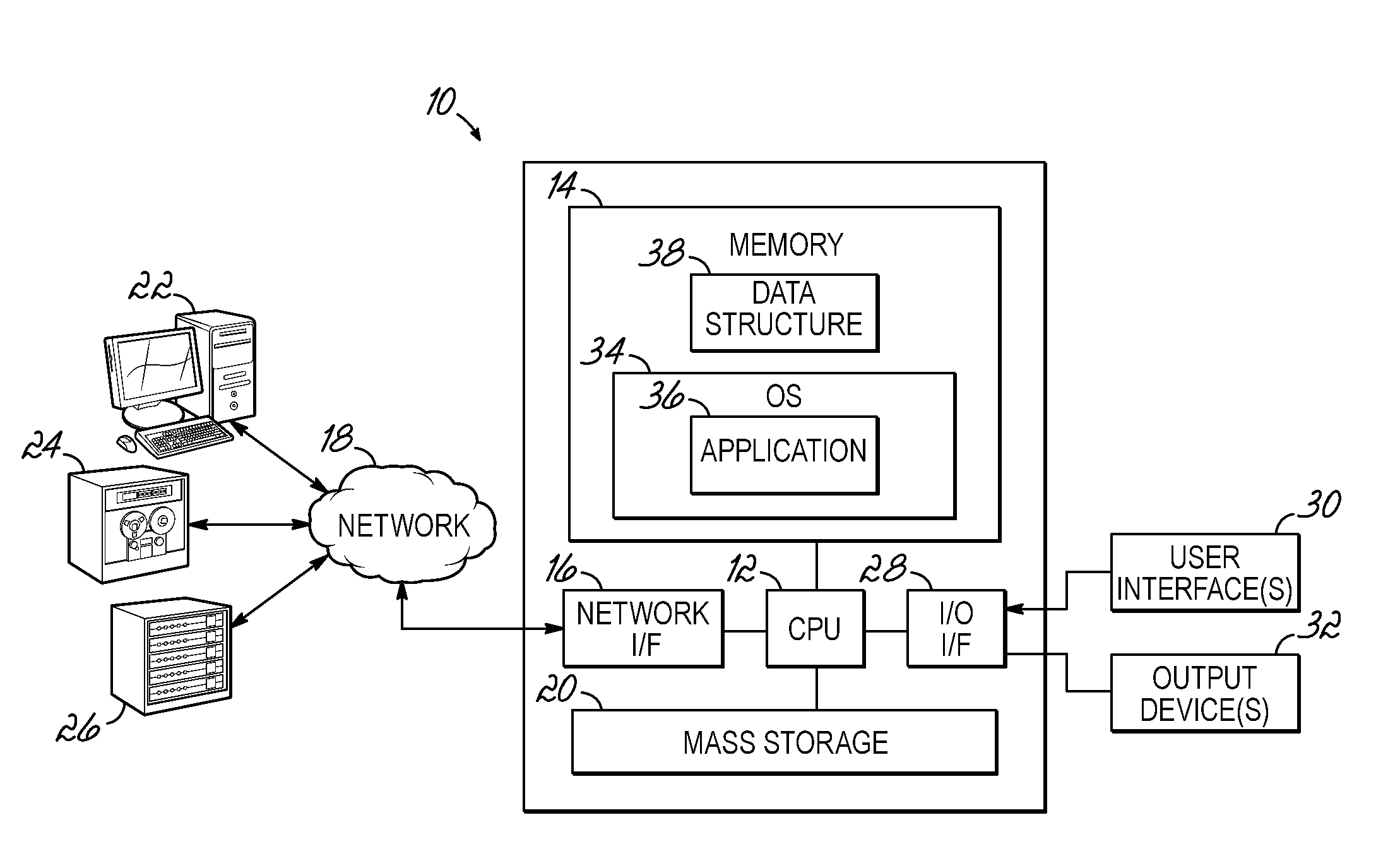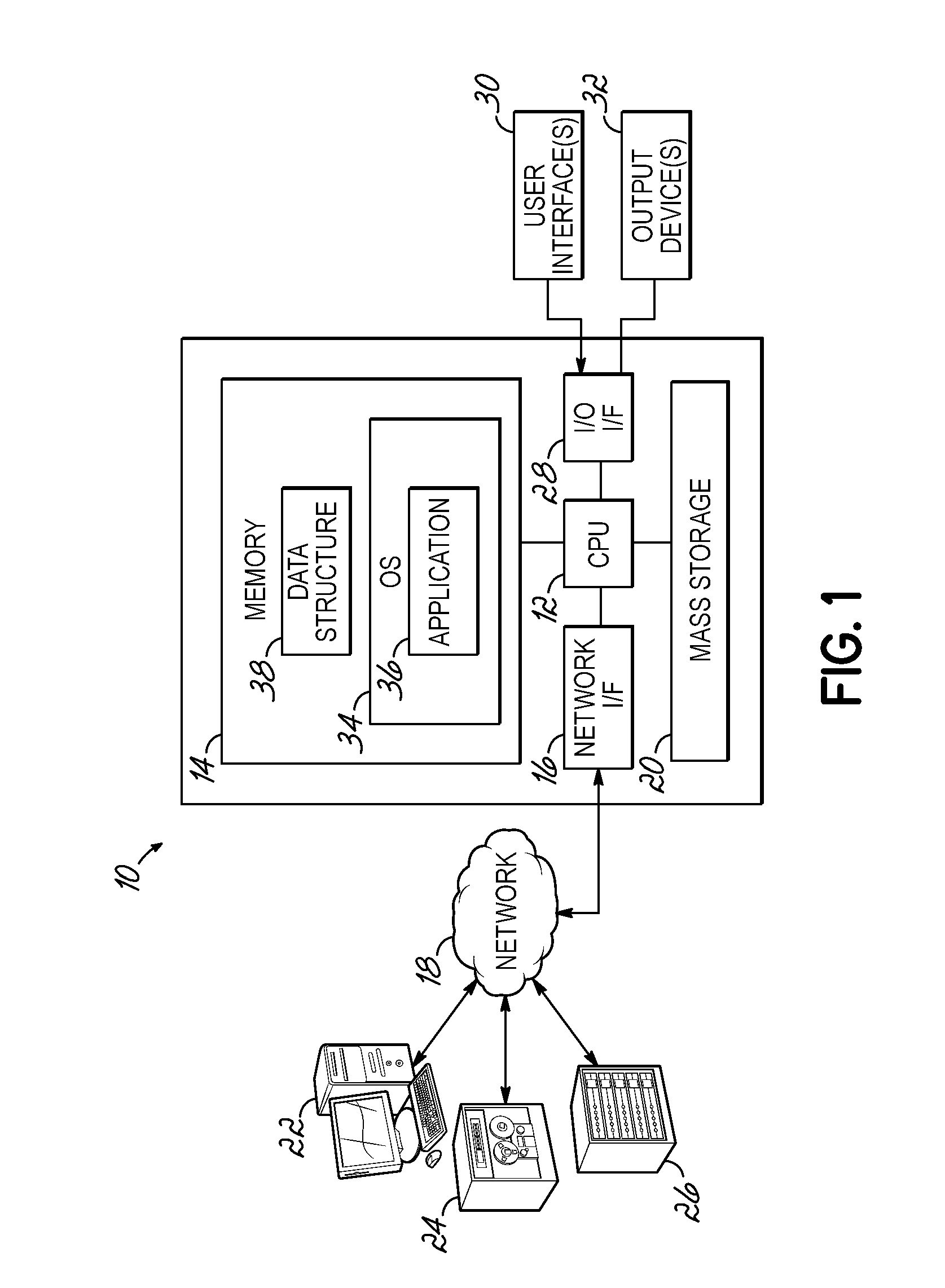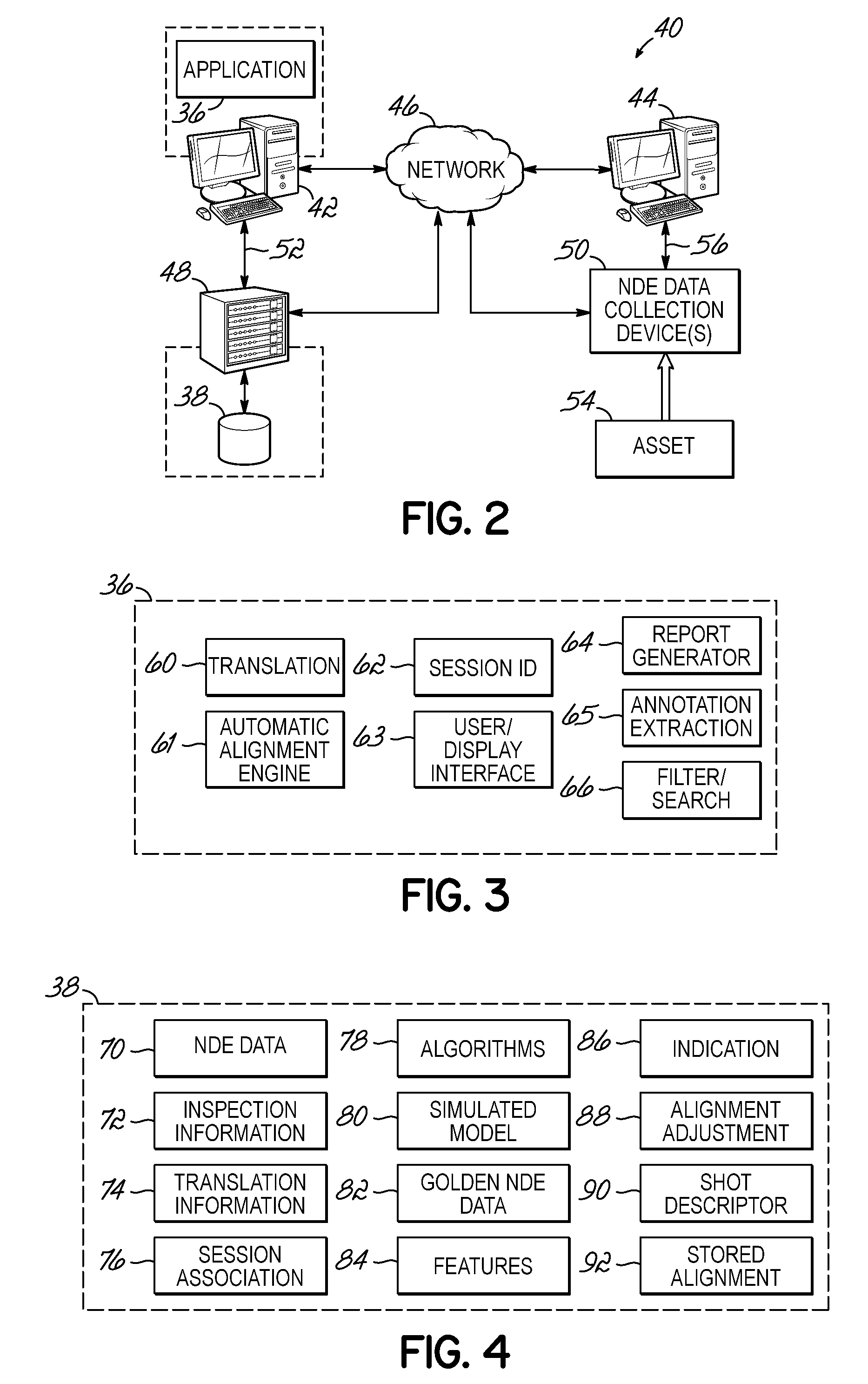Managing non-destructive evaluation data
a non-destructive evaluation and data technology, applied in the field of computing systems, can solve the problems of large amounts of data that are difficult to categorize and otherwise analyze in whole, nde data is typically difficult to manage and handle, and the asset has little nde data
- Summary
- Abstract
- Description
- Claims
- Application Information
AI Technical Summary
Benefits of technology
Problems solved by technology
Method used
Image
Examples
example 1
[0124]By way of example, FIG. 26 illustrates a display representation of at least a portion of a dataset of NDE data 600 that may be captured consistent with embodiments of the invention. In particular, the NDE data 600 of FIG. 26 may be captured from at least a portion of an asset, and for this example may be captured from at least a portion of a right wing of an aircraft. FIG. 27 illustrates a display representation of a simulated model 610 of that right wing of the aircraft. Consistent with embodiments of the invention, it may be advantageous to align the NDE data 600 on the simulated model 610. As such, an alignment algorithm to align the NDE data 600 to the simulated model 610 may be determined from the NDE data 600 and / or inspection information associated therewith. The NDE data 600 may then be automatically aligned to the simulated model 610 with that alignment algorithm. FIG. 28 illustrates a display representation of aligned NDE data 620, and in particular illustrates the N...
example 2
[0126]Due to the capture and transformation of NDE data, the exact location of an indication may be unknown, and the approximate location of an indication may be represented. By way of example, FIG. 30 illustrates a display representation 640 that illustrates uncertainty of a determined location for an indication on a simulated model 610. The display representation 640 visually represents two indications as at 642 and 644, and more specifically illustrates a probability density as at 642 and 644 of a distance from the determined location for the indication. Simply put, the closer to the center of the probability density 642 and / or 644 (e.g., which may be a Gaussian distribution density), the more likely that is the actual location of the indication. For example, NDE data and / or inspection information may indicate the location of an indication. The location of the indication may thus be indicated as a point on the simulated model 610 and / or a probability density 642, 644 at the point...
example 3
[0128]During inspection of an asset, at least a portion of NDE data for the asset may not be captured, leading to lapses in coverage. For example, an inspection may involve capturing a plurality of datasets of NDE data from a plurality of portions of an asset. In some embodiments, the inspection involves capturing NDE data from overlapping portions of an asset. However, when a portion of the asset is not captured, there is a lapse of coverage of the asset. As such, embodiments of the invention are configured to indicate that at least a portion of the simulated model is not aligned with NDE data. By way of example, FIG. 32 illustrates a display representation 660 of the simulated model 610 in which at least a portion of the display representation 662, and specifically at least a portion of the background thereof, has been highlighted to indicate a lapse in coverage of aligned NDE data with the simulated model 610. In specific embodiments, the color component of the portion of the dis...
PUM
 Login to View More
Login to View More Abstract
Description
Claims
Application Information
 Login to View More
Login to View More - R&D
- Intellectual Property
- Life Sciences
- Materials
- Tech Scout
- Unparalleled Data Quality
- Higher Quality Content
- 60% Fewer Hallucinations
Browse by: Latest US Patents, China's latest patents, Technical Efficacy Thesaurus, Application Domain, Technology Topic, Popular Technical Reports.
© 2025 PatSnap. All rights reserved.Legal|Privacy policy|Modern Slavery Act Transparency Statement|Sitemap|About US| Contact US: help@patsnap.com



